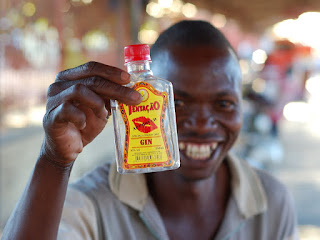Cahora Bassa not cause of cheap South African power
Minister of Mineral Resources and Energy, Pedro Couto, on 26 November denied a claim by Renamo that electricity is cheaper in South Africa than in Mozambique because power from the Cahora Bassa dam on the Zambezi is sold far too cheaply to South Africa.
Speaking in the country’s parliament, the Assembly of the Republic, during a question and answer session between
the deputies and the government, Couto said that the total amount of power generated in the SADC (Southern African Development Community) region was 55,000 megawatts.
Of this, 43,000 megawatts(almost 80 per cent) was generated inside South Africa.
Speaking in the country’s parliament, the Assembly of the Republic, during a question and answer session between
the deputies and the government, Couto said that the total amount of power generated in the SADC (Southern African Development Community) region was 55,000 megawatts.
Of this, 43,000 megawatts(almost 80 per cent) was generated inside South Africa.
South Africa’s imports of electricity from Mozambique(mostly from Cahora Bassa) account for less than three per cent of the total power consumed in South Africa.
It was thus impossible,Couto said, for the price charged for Cahora Bassa power to have a determinant impact on the final price paid by South African electricity consumers.
The reason why electricity is cheaper in South Africa than in Mozambique,he argued,is because South Africa is an industrial country which uses large amounts of power at high and medium voltage.
In Mozambique,on the other hand,98 per cent of consumers are domestic, using power at low voltage.Couto said it is more expensive to produce low voltage than high voltage power,because
more transformation isrequired which increases the cost.
That explained the price difference between South Africa and Mozambique, and it had nothing to do with Cahora Bassa.
Asked about the unreliability of
power supply in central Mozambique,Couto said that
cities such as Beira and Chimoio receive their electricity from the Chicamba and Mavuzi dams on the Revue River.
These power stations were built under Portuguese colonial rule, in the early 1950s, and their efficiency has declined to less than 50 per cent of installed capacity.
Major rehabilitation work began on the two Revue dams in 2014, and Couto said that when the work is finished next year they will operate at full capacity of 90 megawatts.
Renamo had also complained
that Zumbo, in Tete province, is
not supplied from the Mozambican national grid at all, but from Zambia.
Couto said that was perfectly true, and other frontier regions also obtained their power from neighbouring countries –Milange, in Zambezia province,from Malawi, and Espungabera,in Manica, from Zimbabwe – while the Kosi Bay area in the South African province of
Kwazulu-Natal drew its power from Mozambique.
It was thus impossible,Couto said, for the price charged for Cahora Bassa power to have a determinant impact on the final price paid by South African electricity consumers.
The reason why electricity is cheaper in South Africa than in Mozambique,he argued,is because South Africa is an industrial country which uses large amounts of power at high and medium voltage.
In Mozambique,on the other hand,98 per cent of consumers are domestic, using power at low voltage.Couto said it is more expensive to produce low voltage than high voltage power,because
more transformation isrequired which increases the cost.
That explained the price difference between South Africa and Mozambique, and it had nothing to do with Cahora Bassa.
Asked about the unreliability of
power supply in central Mozambique,Couto said that
cities such as Beira and Chimoio receive their electricity from the Chicamba and Mavuzi dams on the Revue River.
These power stations were built under Portuguese colonial rule, in the early 1950s, and their efficiency has declined to less than 50 per cent of installed capacity.
Major rehabilitation work began on the two Revue dams in 2014, and Couto said that when the work is finished next year they will operate at full capacity of 90 megawatts.
Renamo had also complained
that Zumbo, in Tete province, is
not supplied from the Mozambican national grid at all, but from Zambia.
Couto said that was perfectly true, and other frontier regions also obtained their power from neighbouring countries –Milange, in Zambezia province,from Malawi, and Espungabera,in Manica, from Zimbabwe – while the Kosi Bay area in the South African province of
Kwazulu-Natal drew its power from Mozambique.
Such arrangements were common throughout the world,he said, because it can often be cheaper and more rational to ibtain electricity from a neighbouring country, rather than from a more distant national power source.
“Mozambique is part of the Southern African region”,stressed Couto.
“We are not closed in on ourselves. Youcan’t run energy distribution
on a basis of total isolation”.
“We are not closed in on ourselves. Youcan’t run energy distribution
on a basis of total isolation”.
Frelimo deputies found itstrange that Renamo was complaining about electricity at a time when more of
Mozambique is electrified than ever before.
Francisco Mucanheia pointed out that in 2007, when the Mozambican state took a majority holding in Cahora Bassa,only 64 districts had electricity.
That figure has now risen to 146 – only six district capitals do not yet have electricity from the grid, and all are among the new districts set up last year by dividing existing districts into smaller units.
Mozambique is electrified than ever before.
Francisco Mucanheia pointed out that in 2007, when the Mozambican state took a majority holding in Cahora Bassa,only 64 districts had electricity.
That figure has now risen to 146 – only six district capitals do not yet have electricity from the grid, and all are among the new districts set up last year by dividing existing districts into smaller units.
SOURCE AIM

Comments
Post a Comment
What do you think 🤔?